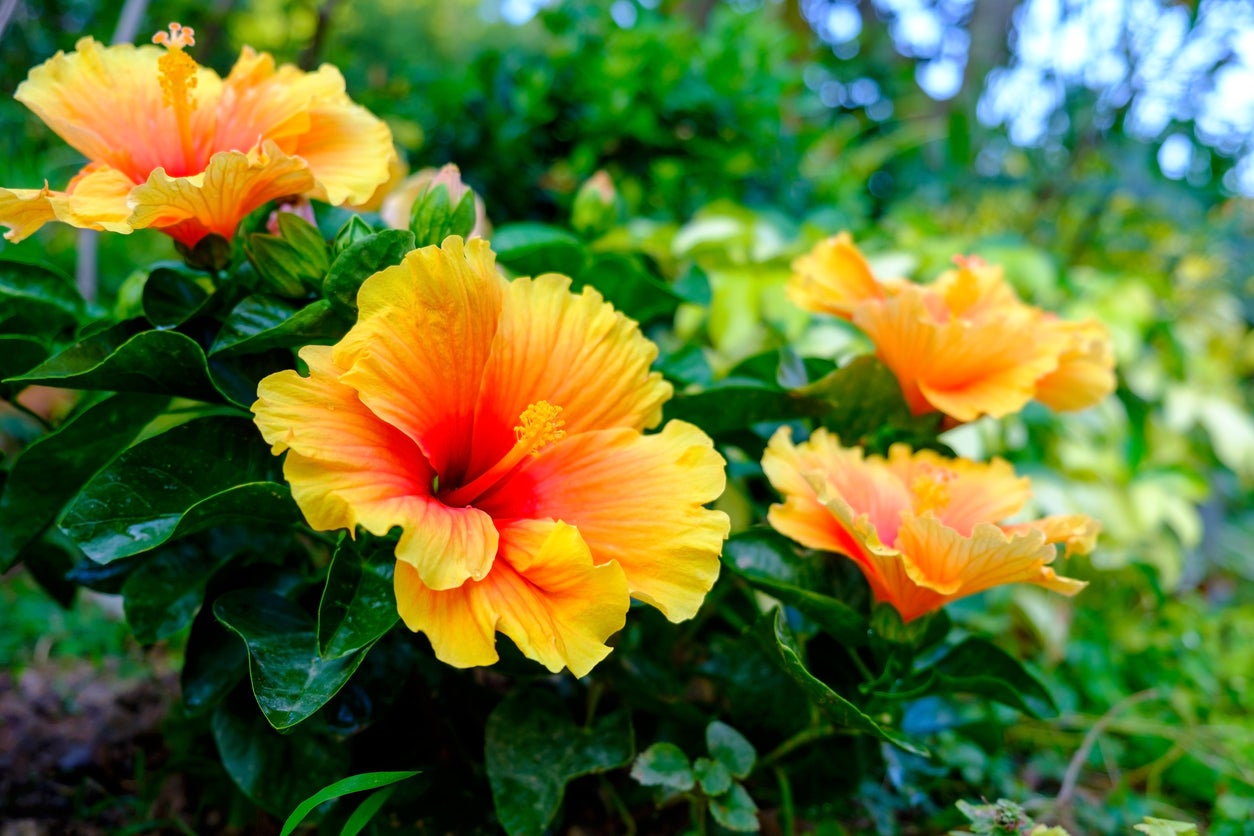How To Plant Hibiscus Seeds – Tips For Sowing Hibiscus Seeds


Hibiscus is a gorgeous tropical shrub that thrives in the warmer environments of the southern United States. Although most gardeners like to purchase young hibiscus plants from garden centers or nurseries, you may want to try your hand at sowing hibiscus seeds.
While it does take longer to grow hibiscus from seed, it can be a rewarding, productive activity, and an inexpensive way to fill your garden with these amazing plants. Let’s learn how to plant hibiscus seeds, step by step.
Hibiscus Seed Propagation
You can plant freshly harvested hibiscus seeds directly in the garden in autumn if you live in a very warm, frost-free climate. However, most gardeners prefer to start seeds indoors. Here’s how to go about it:
Nick the seeds with fine grade sandpaper or the tip of a knife to allow moisture to enter the seed. This step isn’t absolutely required, but it provides a jump start on hibiscus seed germination. Nicked seeds usually germinate in a month or less, otherwise, hibiscus seed germination may not occur for several months.
After nicking the seeds, soak them in warm water for at least an hour, or overnight.
Fill a container with good quality seed starting mix. (Avoid mixes with fertilizer pre-added). Any container with a drainage hole will work, but if you’re planting several seeds, celled seed trays are convenient.
Water the seed starting mix until it’s evenly moist but not dripping wet or soggy. Hibiscus seeds will rot in too much moisture. Plant hibiscus seeds to a depth of about one-quarter inch to one-half inch (.5-1 cm.).
Gardening tips, videos, info and more delivered right to your inbox!
Sign up for the Gardening Know How newsletter today and receive a free copy of our e-book "How to Grow Delicious Tomatoes".
Hibiscus seed germination requires heat, so a location where temps are maintained between 80 and 85 degrees F. (25-29 C.) is ideal. You may need to set the tray on a heat mat to provide adequate warmth. Cover the tray with clear plastic or slide it into a white plastic garbage bag.
Check the tray daily. The plastic will keep the environment moist, but it’s critical to water lightly if the seed starting mix feels dry. Remove the plastic and put the trays under fluorescent bulbs or grow lights as soon as the seeds germinate. The lights should be on sixteen hours per day.
Move the seedlings to individual, 4 inch (10 cm.) pots when the stems begin to get woody and have several sets of leaves. Handle the seedlings carefully as the stems are easily broken. At this point, begin feeding the seedlings an all-purpose, water-soluble fertilizer diluted to half-strength.
Gradually move the young plants into larger pots as they grow. Plant the hibiscus plants outdoors when they’re large enough to survive on their own. Be sure there’s no imminent danger of frost. Otherwise, you may continue to grow them as houseplants but allow them to enjoy the warmer months outdoors.

A Credentialed Garden Writer, Mary H. Dyer was with Gardening Know How in the very beginning, publishing articles as early as 2007.
-
 Looking For Plants To Give You The Soft And Fuzzies? Try These 5 Fuzzy Leaf Plant Options
Looking For Plants To Give You The Soft And Fuzzies? Try These 5 Fuzzy Leaf Plant OptionsLovers of texture, drama, silver foliage and tactile plants will adore these special sensory garden additions. These fuzzy leaf plant options will leave you all aglow
By Susan Albert
-
 Get Ready For A Summer Of Hummers! Grow These Full Sun Hummingbird Plants and Flowers
Get Ready For A Summer Of Hummers! Grow These Full Sun Hummingbird Plants and FlowersIf you’re lucky enough to enjoy a sunny backyard, make sure you are maxing out on your pollinator opportunities and grow these full sun hummingbird plants and flowers
By Tonya Barnett